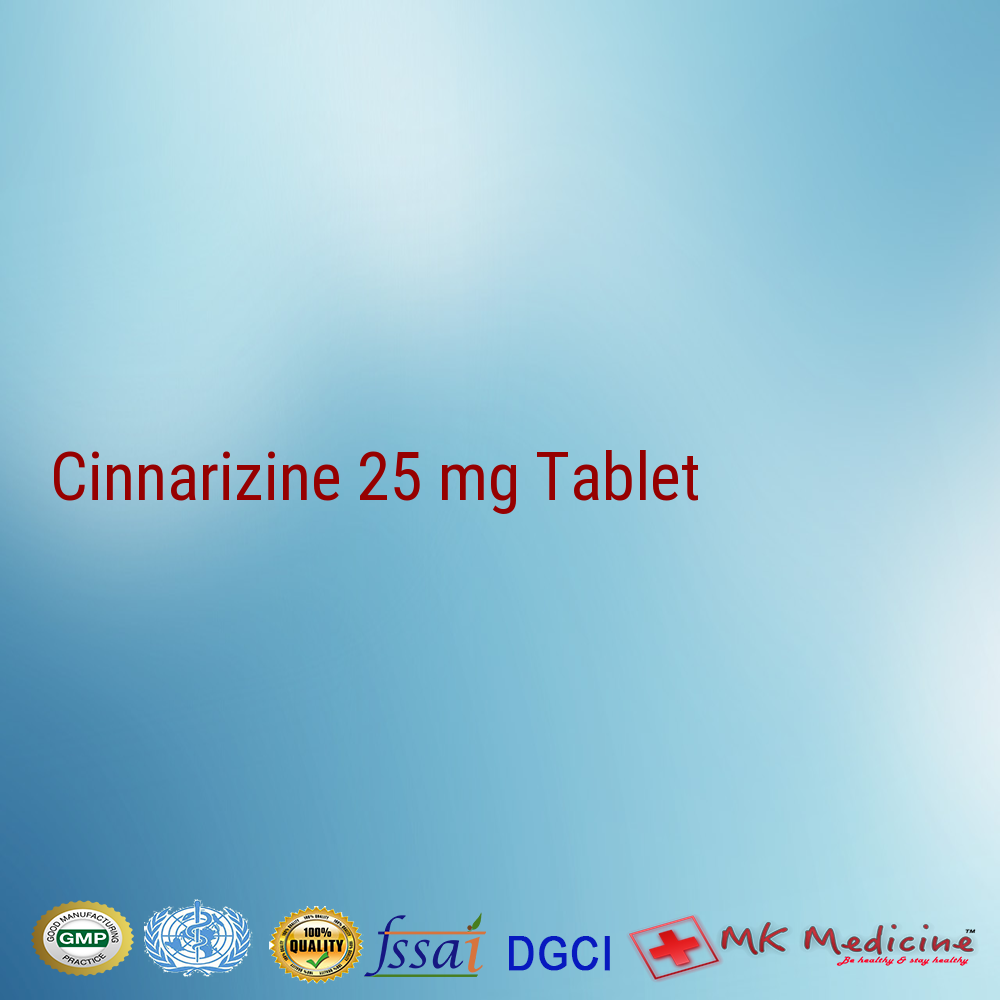Cinnarizine is used to treat problems affecting the inner ear and balance, such as dizziness and sickness. It is also helpful in preventing travel sickness.
Nerves situated inside your ear send messages to your brain with information about your movement. Along with messages from your eyes and muscles, these nerves help your body to maintain a good sense of balance. If the nerves in one of your ears send too many, too few, or wrong messages to your brain, it conflicts with the messages sent from your other ear, your eyes, or your body. Your brain then gets confused and this can cause dizziness and a spinning sensation (vertigo), and can make you feel sick.
Travel sickness is caused by repeated unusual movements during travelling. These repeated movements, such as going over bumps or around in a circle, send lots of messages to your brain. The balance mechanism in your ear sends different signals to those from your eyes, which results in your brain receiving mixed and confusing messages. This is what causes you to feel sick.
MK Medicine is a leading pcd franchise provider, contract manufacturer and hospital supplier of WHO-GMP certified Cinnarizine 25 mg Tablet
Some medicines are not suitable for people with certain conditions, and sometimes a medicine may only be used if extra care is taken. For these reasons, before you start taking cinnarizine it is important that your doctor or pharmacist knows:
- If you are pregnant or breast-feeding.
- If you have prostate problems, or have been experiencing difficulty passing urine.
- If you have any problems with the way your liver works or with the way your kidneys work.
- If you have any of the following conditions: increased pressure in your eye (glaucoma), epilepsy, or Parkinson‚s disease.
- If you think you may have a blockage in your intestines.
- If you have a rare inherited blood disorder called porphyria.
- If you are taking any other medicines. This includes any medicines you are taking which are available to buy without a prescription, such as herbal and complementary medicines.
- If you have ever had an allergic reaction to a medicine.
Along with their useful effects, most medicines can cause unwanted side-effects although not everyone experiences them. The table below contains some of the most common ones associated with cinnarizine. You will find a full list in the manufacturer‚s information leaflet supplied with your medicine. The unwanted effects often improve as your body adjusts to the new medicine, but speak with your doctor or pharmacist if any of the following continue or become troublesome.
| Common cinnarizine side-effects (these affect less than 1 in 10 people) | What can I do if I experience this? |
|---|---|
| Feeling sleepy | If this happens, do not drive or use tools or machines. Do not drink alcohol |
| Other cinnarizine side-effects | What can I do if I experience this? |
| Headache, dry mouth, indigestion, stomach upset | These should soon pass, but if any become troublesome ask a pharmacist to recommend a suitable remedy |
Cinnarizine is classified as a selective antagonist of T-type voltage-operated calcium ion channels, because its binding blocks the channels and keeps them inert.It has a Ki (inhibitory constant) value of 22nM.It is also known to have antihistaminic, antiserotoninergic and antidopaminergic effects,binding to H1 histamine receptors, and dopaminergic (D2) receptors. The IC50 (half-maximal inhibitory concentration) of cinnarizine for smooth muscle contraction inhibition is 60mM and it has been shown that this drug preferentially binds to its target calcium channels when they are in an open, as opposed to closed conformation. In treatment of nausea and motion sickness it was previously hypothesized that cinnarizine exerts its effects by inhibiting the calcium currents in voltage gated channels in type II vestibular hair cells within the inner ear. However, more recent evidence supports the idea that at pharmacologically relevant levels (0.3µM–0.5µM), cinnarizine is not lessening vestibular vertigo by blocking calcium channels, but rather by inhibiting potassium (K+) currents that are activated by heightened hydrostatic pressure on the hair cells.It is true that cinnarizine does abolish calcium currents in vestibular hair cells as well; it is just that this only occurs at higher concentrations of drug (3µM).The inhibition of these currents works to lessen the vertigo and motion-induced nausea by dampening the over-reactivity of the vestibular hair cells, which send information about balance and motion to the brain.
| Action of cinnarizine | Target of action |
|---|---|
| Calcium ion channel antagonist | T-type calcium channels |
| Antihistaminic | H1 receptors |
| Antiserotinergic | 5-HT2 receptors[37] |
| Antidopaminergic | D2 receptors |
Important Notice:- The Database is still under development and may contain inaccuracies. It is not intended as a substitute for the expertise and judgement of your physician, pharmacist or other healthcare professional. It should not be construed to indicate that the use of any medication in any country is safe, appropriate or effective for you. Consult with your healthcare professional before taking any medication.


Cinnarizine 75mg Tablet